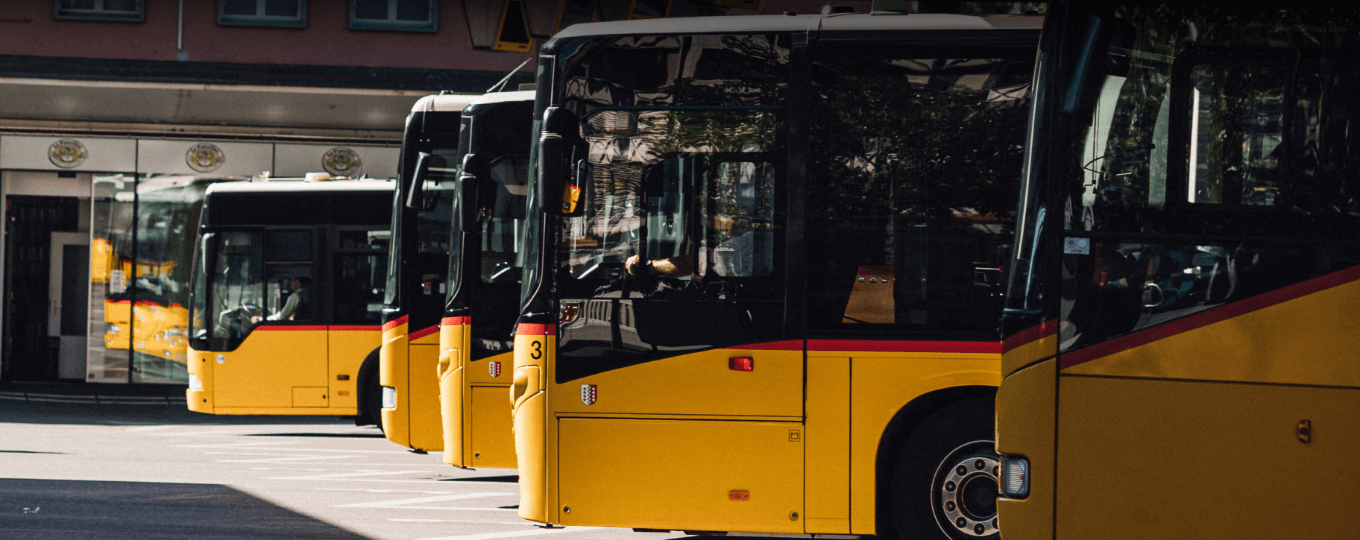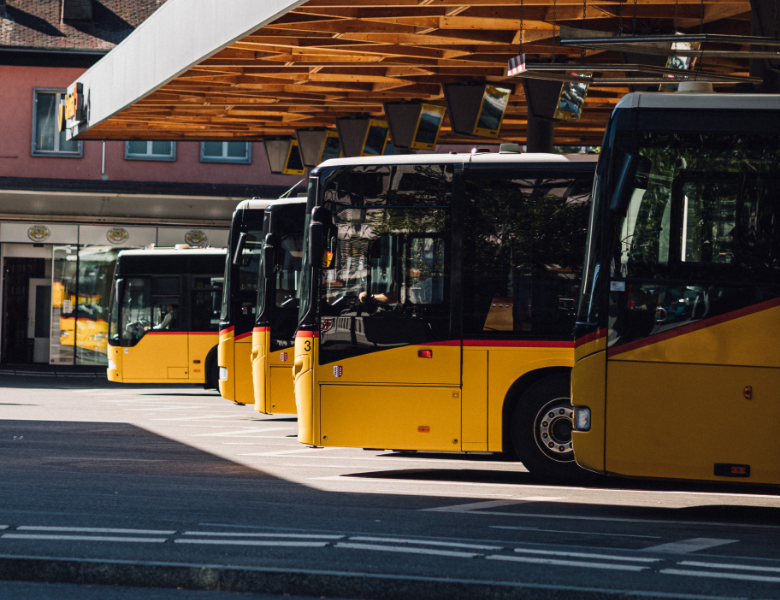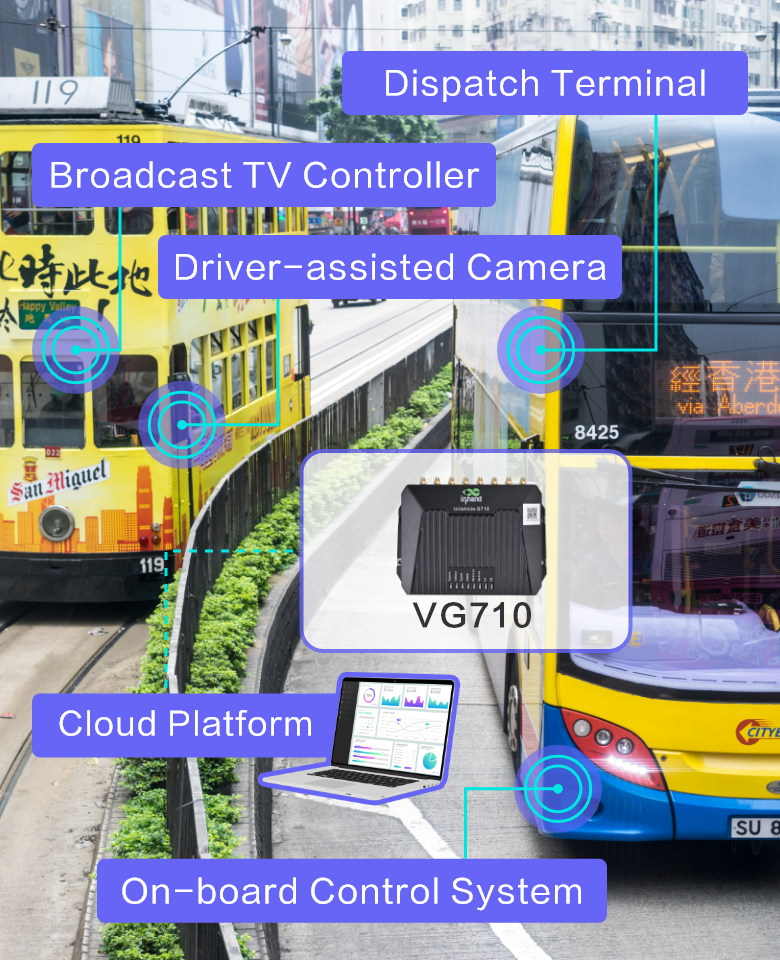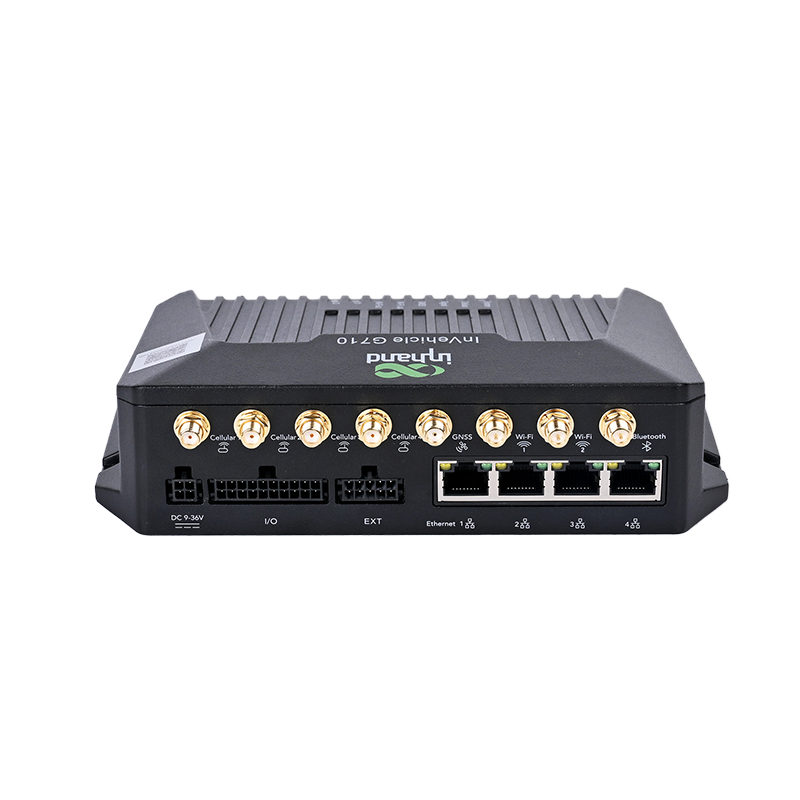

Smart Transport: Digital Upgrading in a Famous Tourist City
The VG710 5G vehicle gateway builds a reliable, compatible and interoperable network for city bus systems, helping drive the digital transformation of urban public transport.
Background
With the growth of urban population and expansion of city areas, inter-regional mobility has become increasingly common. Public transport companies and relevant regulatory authorities not only require more robust safety management models for buses but also strive to offer passengers a more convenient boarding experience.

Customer Requirements
Integrated Platform for Precise Operation and Maintenance Management
Public buses incorporate various systems such as broadcast TV, passenger flow statistics, vehicle announcement, and monitoring systems. Integration of these diverse platforms is crucial to achieve a unified network, cloud, database, and platform approach.
Ensured Urban Road and Passenger Safety
To attain safe bus operation, comprehensive video surveillance of vehicles is essential. Additionally, intelligent recognition of pedestrians on roads, driver behavior management, and real-time monitoring of vehicle status are critical functionalities.
Enhanced Passenger Experience
Elevating the interactive capabilities of buses and bus stop displays enables efficient dissemination of information and communication of updates.
Passenger Engagement and Feedback
Establish channels for passengers to easily provide opinions, suggestions, and complaints. This enables a timely understanding of passenger needs, improves service quality, and provides a more personalized passenger experience.
ITxPT Compliance
ITxPT (Information Technology for Public Transport) standards for Intelligent Transport Systems (ITS) play a crucial role in vehicle digitalization solutions.
Compatibility and Interoperability
ITxPT standards specify seamless integration with devices and systems from different manufacturers and suppliers. This enables effective collaboration and seamless data exchange and sharing among components and systems.
Standardization of Data Formats and Interfaces
ITxPT standards define data formats and interfaces for public transport information systems, ensuring consistency and interoperability. Rome’s Mobility Agency aims to adopt ITxPT-compliant standards for unified data processing, sharing, and seamless integration between systems.
Hardware requirements
Compliance with ITxPT standards for onboard communication gateway.
Strong positioning capabilities, supporting GPS, Galileo navigation, and inertial navigation for collecting and parsing operational data from automated devices.
4G/5G cellular networks, and APN networks.
Multiple Gigabit M12 Ethernet interfaces, multiple IOs and serial ports.
OBD-II for reading vehicle status data.
Powerful edge computing capabilities and support for Docker.
Powerful edge computing capabilities and support for Docker.
Solution
-–-1-1.png)

The project leverages InHand’s VG710 vehicle edge computing gateway to enable IoT capabilities for public buses. This implementation facilitates real-time collection and upload of vehicle status and travel data, comprehensive vehicle monitoring and identification, location-based navigation, and driver behavior monitoring.
The solution follows a typical IoT architecture of “edge + communication + cloud”. The “edge” encompasses components such as onboard vehicle control systems, passenger counting cameras, driver assistance cameras, broadcasting and television controllers, dispatch terminals, and all-around vehicle monitoring cameras. The “communication” is realized through the VG710 vehicle gateway, which supports functionalities like GPS/BeiDou positioning, LTE remote communication, vehicle area network communication, and edge computing. It captures and exchanges data from various bus systems within a Docker environment, ensuring real-time data upload to the cloud platform.
The cloud platform serves as a digital hub for the transit system, integrating intelligent dispatching, secure operations, travel services, information dissemination, and more. This comprehensive approach combines the power of edge computing, seamless communication, and cloud-based services to drive a smarter, more efficient, and passenger-centric public transportation experience.
Benefits
Fast, Reliable, and Uninterrupted 4G Connectivity Ensures Stable Online Performance
The VG710 provides continuous access to high-speed 5G networks, with multi-layer link detection and recovery to ensure 24/7 bus connectivity.
Powerful Peripheral Expansion Enables Interconnectivity and Centralized Management
The VG710 can connect to on-board devices through Gigabit Ethernet, Wi-Fi 5, Bluetooth, RS485 and RS232. This facilitates IP-based networking within the vehicle, enabling intercommunication between devices and facilitating fleet management.
Personalized Services and Functions through Flexible Development
The VG710 supports Python, C/C++, and Docker, allowing integration partners to deploy customized apps for transit companies.
Real-time Vehicle Status Monitoring and Preventive Maintenance
The VG710 integrates comprehensive onboard functions, monitoring vehicle health status and power information in real time through OBD-II, and uploading data to a management platform. Through diagnostics and analysis, it enables proactive maintenance to reduce the breakdowns.
Easy Cloud Integration, “Cloud + Edge” Smart Management
With simple configuration, the VG710 seamlessly connects to third-party cloud platforms like AWS and Azure, or user-owned cloud platforms using MQTT or HTTP protocols. This enables the rapid development and deployment of custom applications in the cloud, facilitating the growth of value-added services.



